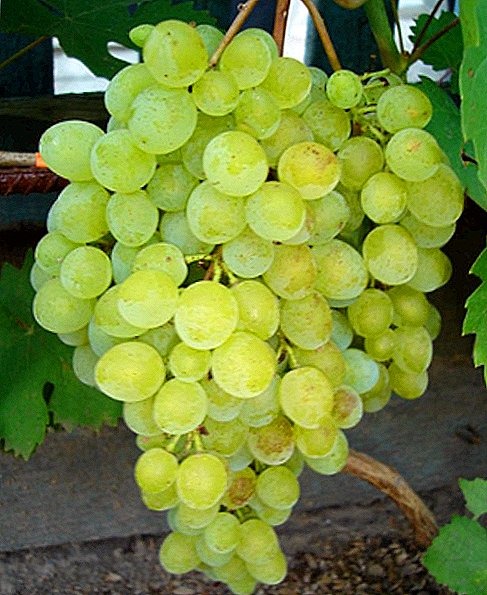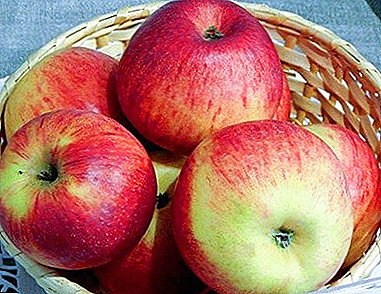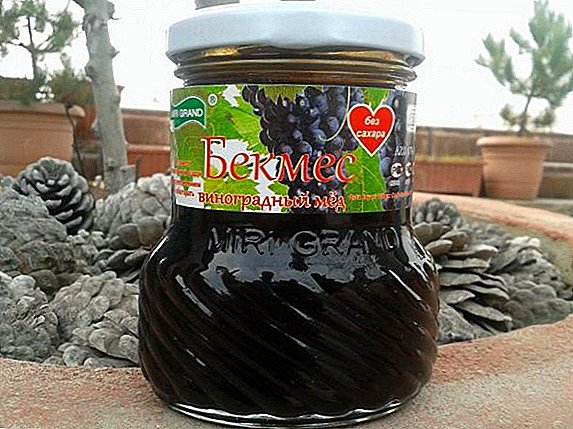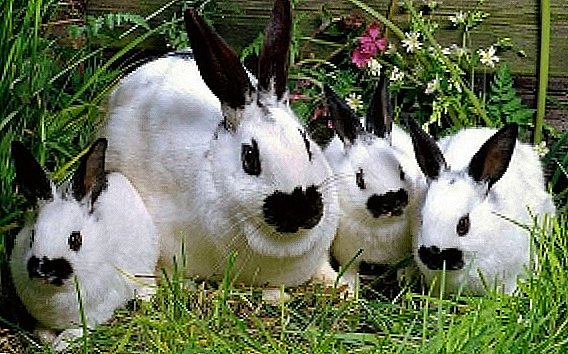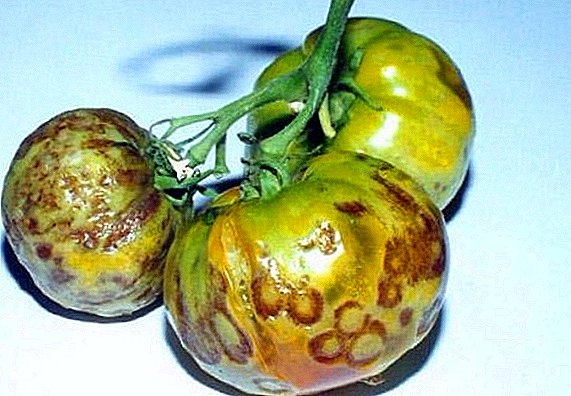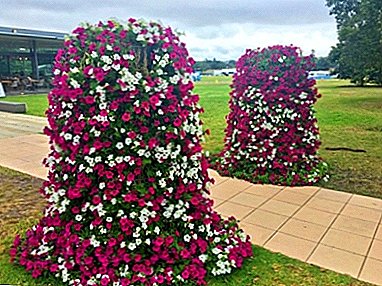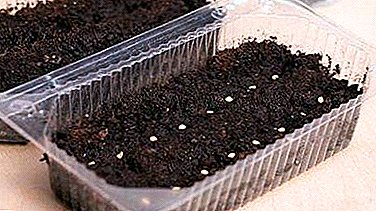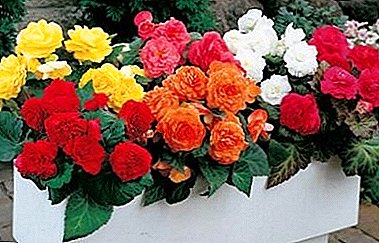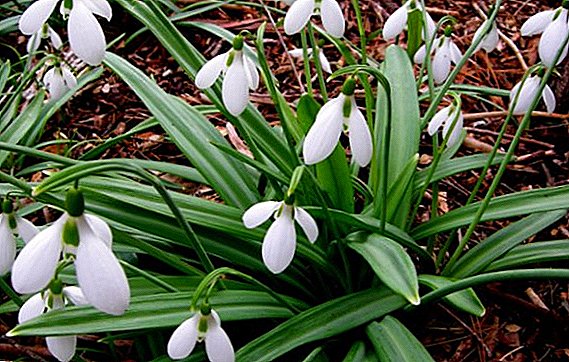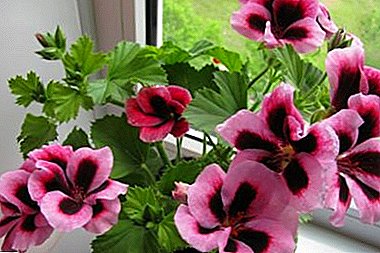
Royal Pelargonium is not just got its name. Appearance is really royal. The buds are quite large - they can reach 15 centimeters in diameter. In addition, the inflorescences do not rise above the whole bush, but grow at the level of all the shoots, which makes the bush very elegant and large in comparison with other members of the pelargonium family.
In the article we will talk about the varieties of royal pelargonium, which, by the way, have now been bred a lot.
Features of the form
Many inexperienced growers confuse pelargonium with geraniums. However, if you look closely, you can find a lot of differences. The most important difference is the shape of the flower. In geranium it is correct. But in Pelargonium - no, the bud is somewhat similar to the beak of a stork (which is why the name of the plant itself went).
For the first time, royal pelargonium was described in the early twentieth century - in 1901. This species was the result of long work on crossing. This was done by the nerd Liberty Hyde Bailey. The scientist also found that most of these flowers grow in England, the Netherlands and Germany. This plant is considered aristocratic, not only because of the name, but also because of the capriciousness in the care. Not all growers have the patience to care for the “Queen”.
The peculiarities of cultivation include the following factors.:
- short flowering period;
- any, even the slightest mistake, during cultivation can lead to the absence of buds;
- outdoors, the plant may die, it is better not to put it on the street;
- to propagate the royal flower is very difficult.
Sheet plates have a rough surface and sharp edges. Buds can be both simple and terry. One more a feature of the petals is the presence of a spot in each of them in the center. It should also be said that the shoots begin to harden at the base.
Names of popular varieties with a description and photo
There are a lot of royal pelargonium species. We describe only the most popular.
Mandarin

The bush of this species is very compact, but to achieve the correct form, you need to work hard and regularly cut off the growing shoots. The advantage is a long flowering, which begins quite early - at the very beginning of spring. Foliage monophonic - dark green. In the spring to enjoy lush flowering, during December and January, the plant should be held in a cool room. The buds are similar in shape to the petunia buds., only the first in size larger.
White

This species is especially no different from the previous one. Only colors. The inflorescences of this variety are white, and in the very center one can see lilac or dark pink inclusions (sometimes divorces). Leaf plates of the same shade, but it is a little brighter than Mandarin. Duration of flowering comes to six months - starting in March and ending in September.
Astero pink

This variety is loved and appreciated for its extraordinary appearance. The color of his flowers will surprise even the most capricious flower growers. The shade of the petals turned out due to the mix of pink and brick colors. Also in the middle there are blotches of darker colors, which gives the whole plant a certain charm. This species does not bloom too long for its "brethren" - about 4-5 months. But it’s very pompous and abundant - the buds bloom one by one.
Care rules
The recommendations described below should be followed to achieve full-fledged growth and development and abundant bloom for a long time.
- Watering mode. "Queen" will not tolerate excessive soil moisture - the plant may die immediately. Therefore, new watering can be carried out only if the soil is completely dry after the previous one. To moisten the substrate, select only separated water at room temperature. It is best to water the plant through the pan. Thus, the flower will take the required amount of water, and the florist can remove the excess. This can be done a quarter of an hour after watering.
- Top dressing. Fertilizing royal pelargonium is necessary only during the growing season - from March to October. Next, the plant goes on vacation. In winter, fertilizers should be generally abandoned. Otherwise, the flower will not understand that a period of rest has come and will not be able to fully recover during the winter.
Preference is given only to complex fertilizing in liquid form. It is necessary that they necessarily contain potassium, phosphorus and nitrogen in equal amounts.
- Transfer. Change the "place of residence" for royal pelargonium is necessary, but not every year. It will be enough once every two to three years. To understand that the plant was crowded, you need to look at the drainage holes in the pot. If the roots have already appeared in them, then it's time to choose a larger container. But do not change the pot to a very large. It is necessary to increase its diameter by only 4-5 centimeters. Otherwise, all growth will go to the root system, and not the above-ground part.
During transplantation, the substrate can also be updated, as it eventually loses its nutritional properties. Soil can be purchased at the store, and you can cook yourself. To do this, take the soil from the garden, peat and river sand. All these components need to be taken in equal proportions.
Important. Do not forget to put a drainage layer on the bottom of the pot. It can be prepared from expanded clay pebbles or broken bricks.
- Pruning. First of all, it is necessary to get rid of dried or affected shoots. And then look at the healthy ones. It is especially important to cut the plant after winter, since during this period it especially goes up due to the lack of light. Pruned the longest and bare stems.
This can only be done with a well-sharpened and disinfected instrument. After the procedure, cuts are treated with fungicides or simple wood ash to prevent the possibility of rotting.
 Air temperature and humidity. Royal Pelargonium does not like too humid air, so experienced growers recommend keeping this indicator at a level slightly above average. The exception is the days of extreme heat. At this time, you can slightly spray the air around the plant, but do not need to spray water directly on the surface of the flower, as this can lead to burns.
Air temperature and humidity. Royal Pelargonium does not like too humid air, so experienced growers recommend keeping this indicator at a level slightly above average. The exception is the days of extreme heat. At this time, you can slightly spray the air around the plant, but do not need to spray water directly on the surface of the flower, as this can lead to burns.As for the temperature, it should be above average. In summer, the most suitable temperatures are 22–25 degrees during the day; at night, the air should be less heated - up to about 18–20 degrees above zero.
It is necessary to ensure that the substrate does not overheat in the sun. Because such a process can lead to the development of diseases of the root system.
- Wintering. Royal Pelargonium needs a rest period in order to gain strength for the new growing season. Resting plants are always in winter. At this time, the temperature of the content is reduced to about 15 degrees Celsius. Soil moistening should occur no more than once a week. You also need to rearrange the pot with a flower in a more darkened room.
If the florist refuses to overwinter, then next spring he may not wait for the new flowering (why the royal pelargonium does not bloom and how to correct the situation, read here). Or the buds will be so small that they can hardly be called royal.
Read more about the care of Royal Pelargonium described in this video:
In the article we talked about the varieties of royal pelargonium and the rules for its cultivation. It will seem to someone that this plant is too whimsical in its care. But those who at least once saw the “queen” live and appreciated her magnificent inflorescences, contrasting with monotonous foliage, stop thinking about the difficulties of growing and immediately replenish their floral collections with this beauty.


 Air temperature and humidity. Royal Pelargonium does not like too humid air, so experienced growers recommend keeping this indicator at a level slightly above average. The exception is the days of extreme heat. At this time, you can slightly spray the air around the plant, but do not need to spray water directly on the surface of the flower, as this can lead to burns.
Air temperature and humidity. Royal Pelargonium does not like too humid air, so experienced growers recommend keeping this indicator at a level slightly above average. The exception is the days of extreme heat. At this time, you can slightly spray the air around the plant, but do not need to spray water directly on the surface of the flower, as this can lead to burns.